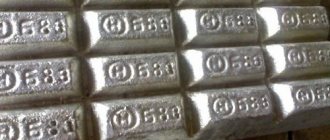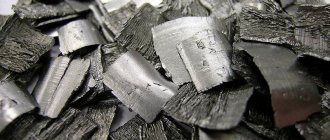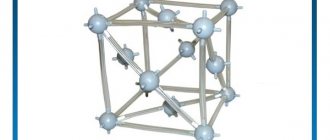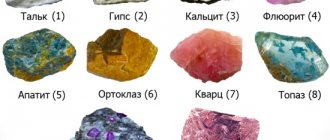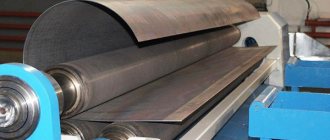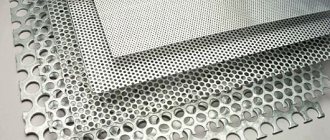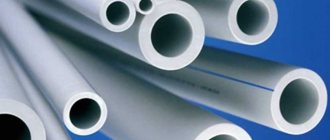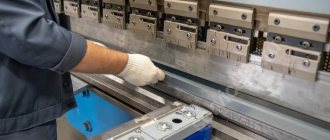Is it necessary to know the thickness of the metal body on a car? After all, the body is one of the most important parts of the car. And all the parts inside can be replaced one way or another.
And any driver will have to tinker with problematic body metal. Therefore, those car enthusiasts who prefer to buy used cars on automobile markets first inspect the body part.
- What can the body tell about the car?
- The condition of the paintwork is almost perfect
- The size of body gaps
- Fasteners, bolts and handles
- Determining the size of paintwork on a passenger vehicle
- Body metal thickness by car brand
- Metal thickness on cars table
- Types of thickness gauges
- Tips for using a thickness gauge
- How metal is made for cars
- Active and passive safety in case of an accident
What can the body tell about the car?
Body metal is quite an expensive part of any car. It is very important to monitor his condition carefully.
After all, this place of the car is exposed to undesirable weather conditions: strong sun, humidity and temperature fluctuations.
Often, the entire history of a given car can be traced by the condition of the body.
A professional auto mechanic will always be able to distinguish serious body damage from minor, cosmetic repairs. Based on the condition of the body, you can determine whether the car was involved in an accident and how serious the damage was.
And also how these damages were hidden. Body repairs have their own nuances that need to be taken into account when selecting a car.
The condition of the paintwork is almost perfect
A used car may not have excellent surface condition. There are always small scratches and chips: on the front part, grille, hood.
There are scratches from shoes on the sills. If you do not notice such flaws. And the coating looks like a new car, most likely, it was repainted.
The size of body gaps
There can be no factory-made uneven or asymmetrical gaps in the areas where the panels connect to each other. If you see anything like this. Most likely there was physical damage to the body, which was subsequently painted over. For the same reason, the doors in the car should not stick and have a clear opening order.
Fasteners, bolts and handles
During factory assembly, not all fasteners are painted along with the body. Some of them are installed on the car after finishing the painting work. It is worth carefully inspecting the car's handles; they are often ignored during repairs. Therefore, they can reveal what defects a particular car had.
Visual inspection
How to check that everything is in order with the body geometry of a VAZ 2110? For visual identification there are two methods, which it is advisable to use both:
Dimensions of openings and clearances of mating parts
The bodies of the VAZ 2110 are quite reliable and resistant to corrosion, as they are treated with factory anti-corrosion treatment. You can read more about the advantages of the body of this car here: https://vazweb.ru/desyatka/kuzov/dlina-kuzova.html
Determining the size of paintwork on a passenger vehicle
Different types of cars have more or less the same level of paintwork. Standards from the factory suggest a level of 100-140 microns.
However, during body modifications and further painting of the car, in some places there is a deviation of the cover from this norm.
Due to the increased presence of putty. In these places, the coating thickness can increase to 200 microns.
For body parts where it is difficult to determine this indicator with the eye, a special tool is used to identify this thickness - a thickness gauge.
If on one car you observe a spread of coating from 110 to 310 microns. Most likely, such a car was undergoing repairs and was repainted.
This device is present in all major auto repair shops. Therefore, if you need a detailed assessment of your car, you always have a chance to contact specialists in this profile.
The most expensive high-level thickness gauges can determine the thickness of paint on individual parts: aluminum or plastic.
Don’t forget that American cars usually have a thicker factory coating layer than Russian or Japanese ones.
The device determines the length of the interval from the sensor to the base of the car body. The closer the thickness gauge magnet is to the metal body, the greater the angle the needle moves.
To accurately determine the thickness of the paint layer, there is a special table of factory indicators. Which must be followed for an accurate conclusion.
Factory paint performance
Factory paint provides protection to the metal base of the body, as well as other layers that are applied to it - galvanization, primer. Only strict adherence to technology ensures the required durability of the body service. How much will the total thickness of the coating made at the factory be? For most cars, the indicator is in the range of 70-180 microns, while the spread across the car can be 20-25 microns, for one part - 10-15 microns. For the following elements, a layer thickness of 50-90 microns is allowed:
- door pillars;
- thresholds;
- trunk;
- engine compartment space.
It is impossible to paint a car without this error, even at the factory. The paint and varnish product may be unevenly distributed in different areas: for example, in horizontal areas the layer will inevitably be thicker than in vertical ones. Also, during painting, shagreen appears - surface roughness. Painting indicators also differ for parts made of non-ferrous and ferrous metals. Thus, even on a new car, the readings may vary when measured by the device.
Body metal thickness by car brand
For accurate measurements, you need to attach the device to the car body. Smoothly move it along the surface, starting from the front edge. To ensure accurate results, measurements must be repeated 3-5 times.
Then calculate the average, taking into account all measurements. And then be sure to compare your measurement options with the indicators in the factory table.
Metal thickness on cars table
| Automobile | Model | Paintwork thickness (µm) |
| Audi | A1, A3, A4, A5, A7, A8 Q3, Q5, Q7 | 80-100 110-165 |
| BMW | 1-series, 2-series, 3-series, 5-series, 7 series X1, X3 X5, X6 | 100-165 90-110 120-165 |
| BYD | F3 | 75-100 |
| Cadillac | Escalade,CTS | 120-150 |
| Chery | Amulet, Tiggo | 100-120 |
| Citroen | C5, C-Elysse C4, C3, Picasso, Berlingo DS4 | 110-140 75-125 205-230 |
| Daewoo | Nexia, Matiz | 90-120 |
| Fiat | Albea, Punto | 100-140 |
| Ford | Focus Explorer, Kuga Mondeo | 150-165 135-145 115-130 |
| Hyindai | Accent, IX35, I30, I40, SantaFe, Elantra Tucson, Solaris, Sonata | 70-110 90-130 |
| Honda | Accord Civic Fit, CR-V | 130-150 100-135 80-100 |
| KIA | Sportage, Sorento, Cerato, Cee'd, Picanto Soul, Rio, Venga, Optima Quoris | 100-140 120-140 150-180 |
| Lexus | RX, ES, LX CT, GX, LS IS | 140-150 120-150 110-140 |
| Mazda | CX-7, CX-5 3.6 | 85-120 110-130 |
| Mercedes-Benz | C, E, S GL, ML | 165-180 90-140 |
| Mitsubishi | Lancer, Pajero L200, Outlander XL, ASX | 90-125 55-75 |
| Nissan | X-trail, Patrol, Juke, Qashqai, Murano, Tiida, Pathfinder lmera, Teana | 80-120 130-150 |
| Opel | Astra, Corsa, Mocca, Zafira, Insignia, Vectra | 110-160 |
| Peugeot | 208, 308, 508, 3008 4008 | 100-120 60-80 |
| Renault | Logan, Koleos Fluence, Duster, Megane, Sandero | 180-230 100-140 |
| Skoda | Octavia, Yeti, Superb, Fabia, Roomster | 100-140 |
| Subaru | Forester, Impreza, Outback, Lagacy, Tribeca | 100-140 |
| Suzuki | Grand Vitara SX4, Swift, Splash | 70-100 90-120 |
| Toyota | LC200, Camry, Highlander, Auris, Verso Avensis, Corolla, Prado, Prius, RAV4 | 110-130 80-110 |
| Volkswagen | Polo, Golf Tiguan, Passat, Caddy, Multivan, Amarok Touareg, Jetta | 80-110 110-140 140-180 |
| Lada, VAZ | Kalina, Priora Granta, Niva Largus | 60-100 110-140 180-230 |
Types of thickness gauges
The level of paintwork has its own characteristics on different materials. Thickness gauges have a variety of functionality. They differ in ease of use and have different price categories. Therefore, such a device should be selected taking into account your tasks and requirements.
- Magnetic. The operating mode of such a thickness gauge is based on the operation of the magnet: the more clearly it approaches the body, the more the needle deflects. A small angle of inclination of the arrow indicates a thick layer of cover. What does it say about repainting a car? This device operates on parts made of steel. And it detects the thickness of the paintwork when it does not exceed 1.5 mm. The unit has a low value, so it is widely used among car enthusiasts.
- Electromagnetic. This thickness gauge is more expensive than a magnetic one. But the accuracy of the device is also higher. The device can only function with metal parts. Plastic and non-ferrous metals cannot be evaluated with this device.
- Eddy current. In terms of accuracy, the device is ahead of previous thickness gauges, but is also more expensive. He can determine the thickness of the coating on parts made of aluminum alloys with a certain degree of accuracy. In this case, aluminum and copper will have the most authentic assessment. But on regular hardware there may be inaccuracies.
- Ultrasonic. The most accurate and expensive thickness gauge, the cost ranges from 10,000 rubles. The device can work with various types of materials: metal, ceramics, composites and plastic. This device is applicable to any car models. It can also be used to determine the coating thickness of additional machine elements.
Tips for using a thickness gauge
There are simple recommendations for effective use of the thickness gauge. Which experts of this profile give:
- You should purchase a device depending on your situation and the surfaces you intend to inspect. If you need to evaluate the quality of coating on steel. Then an expensive thickness gauge for ceramics is not so relevant for you. You can also rent equipment to reduce costs. Or use the metering service at a service station.
- After purchasing a device, you need to take time to calibrate it. There are special samples made of plastic and steel, on which a layer of paint is applied. Check your measurement data with the readings on the samples and, if necessary, adjust the device.
- For each individual measurement plane, it is better to make separate settings for the thickness gauge. And your measurements will be more accurate.
- Slight differences in values are acceptable. Even in the field of one body component, the values are variable: for example, the roof can show 80 microns, and the doors 140 microns.
- Each body element must be measured in at least five places: in the corners and in the middle. This way your measurements will be as effective as possible.
How metal is made for cars
One of the large-scale manufacturers of metal for cars is the plant in Cherepovets. The plant has 4 blast furnaces. Including the largest oven in the world (over 100 meters high).
The cast iron is melted and taken to the steelmaking department, where it is put into molds and combined with additives and scrap metal. The composition of this metal mixture is clearly defined for each type of car. The resulting steel castings are cooled and rolled into rolls.
Next, the rolls are cut with gas cutters and thinned under special rolling to the size of automobile sheets. Then the sheets are rolled into rolls and sent to the galvanizing shop. Galvanization occurs at high temperatures.
This allows the zinc atoms to penetrate deeply into the leaf structure. The metal is then cut into sheets, secured into rolls and packaged for shipment to the customer.
Steel is the main material from which body parts are made. This increases body rigidity. And the weight of the car itself decreases. Also, body elements can be made of aluminum.
Which began to be used in recent years. With the same strength as steel, aluminum elements have less weight. Aluminum also makes it possible to produce parts of any shape.
BMW 5 Series E60
The avant-garde BMW 5 Series has a very good and durable paint coating. Anti-corrosion protection is also performed at a high level. Therefore, the car is still popular in our country. With a good owner, even the very first models look simply amazing. But there is one small problem - there are still some problems at the junction of steel parts. Therefore, the car should not be started, it needs to be monitored.
Active and passive safety in case of an accident
Passive safety is characterized by its ability to reduce the severe consequences of an accident. It is achieved thanks to the strength of the body part, which affects deformation, safe windows and steering wheel.
Solid headrests and large door openings allowing escape in the event of an accident.
The structure of the body at the time of the accident must remain intact. The bumper is made of special materials that reduce injury to a pedestrian during an accident.
The active safety of a machine lies in its ability to prevent accidents. This is achieved by a large field of view to eliminate external interference. Formation of the desired microclimate inside the car, convenient arrangement of instruments and driver’s seating position.
Additional braking systems. Car stability and wheel locking on slippery roads are also included in the active safety package.
However, the thickness of the car body is not directly related to road safety, as many drivers may believe. The standard thickness provides a beautiful external texture of the machine.
But the safety of a car directly depends on the power structure of the body. Which is responsible for passive driving safety. This is achieved through high-strength steel, which increases body rigidity at low weight.
The thickness of the body metal is an important indicator. Which is easy to control using modern equipment - a thickness gauge. When buying a used car, you should pay close attention to this indicator.
This way you can avoid unwanted problems in the future if they were hidden from view by the previous owner. If you do not have this device, you can contact a service station for advice.
Active and passive safety. Body thickness
Passive safety
Passive safety (the property of reducing the severity of an accident) is ensured by: high strength of the body, which prevents its deformation in accidents; seat belts; adjustable head restraints that prevent injury to a person’s neck from a rear impact; safety steering wheel; safety glasses; wide doors, creating the possibility of exiting the car that has suffered an accident; fire-resistant materials.
In passive safety, attention is paid to car windows, including the windshield. During an impact, the windshield must remain solid, for which special technology is used in its manufacture. Side windows also have special requirements - they must break, but not leave fragments with sharp edges that can cause significant harm to health.
The car body must be designed so that in the event of an accident its structure remains intact. In case of an accident, the pedals should not go into the cabin, and the same with the steering wheel, so as not to injure the driver’s chest. After a collision, doors should open easily, door locks should not jam so that victims can be reached. Even if the car is completely destroyed, the power structure must remain intact; the passive safety of the car depends on this.
When creating a new car, passive safety is laid down not only for passengers and the driver, but also for pedestrians. When hitting the latter, the car should not seriously injure them, but rather reduce the consequences of the collision. For this purpose, “kanguryatniks” and powerful steel pipes in front of the car are prohibited. The hood of the car is made with special pyrotrons, which lift it when it hits a pedestrian. The car bumper is also made from special materials that would not injure pedestrians.
Active safety
Active body safety (the ability to prevent accidents) is ensured by: good visibility in all weather conditions; protecting the driver's eyes from glare from sunlight and headlights; good visibility of control instruments, comfortable fit, good thermal insulation of the body; creating an appropriate microclimate inside the cabin.
Active safety includes all kinds of electronic assistants that make driving easier. These include the ABS system, which prevents wheels from locking on slippery roads; exchange rate stability system, which prevents the car from skidding; auto braking systems, as well as EBD, BAS systems and many others.
What is the thickness of the car body
Previously, on cars manufactured during the Soviet period, the thickness was impressive, for example, the thickness of the bottom of the Gaz-21 was as much as 2 mm. On modern cars, the standard body thickness is from 0.6 to 0.8 mm , and the bottom thickness is 0.9 mm. This is due to the modern trend of reducing vehicle weight through the use of high-strength steel and other lightweight and durable materials in the body structure.
Thus, business and middle-class cars use aluminum, which is significantly lighter than steel. On sports class cars, magnesium is used in the body structure, which, despite its light weight, has greater strength than steel. Its only drawback is its much higher cost.
What metal is suitable for repair?
To repair the hull, it is important to use those steels that were calculated and laid at the factory. The car body is a load-bearing element and is designed in such a way that:
- Withstand all loads during vehicle operation;
- In the event of an accident, deform in such a way as not to endanger passengers and the driver. For example, so that the hood does not move into the cabin, but is crushed, gradually reducing the impact force in a frontal collision.
It is better to buy ready-made body parts, or cut parts from similar decommissioned cars. The “pro” of using body iron is the fact that the metal already has a protective coating. And often it is of high quality, because it is applied at the factory. But finished parts are expensive, and a car body of a model similar to yours is rarely available for cutting for welding. What to do?
Volkswagen Golf
Yes, and again the Germans. Well, where would we be without them? Almost every modification of the Golf was distinguished by its durability, reliability, unpretentiousness and low cost of spare parts. For these reasons, our compatriots chose her. But it’s worth remembering that when choosing a Volkswagen Golf you need to pay attention to the country of assembly. The main thing is that it is not Russia, since our craftsmen can make candy out of... well, you understand what. Therefore, only German-made “knee socks” do not rot. “Russian” can crumble in 10 or 5 years, simply before our eyes.
Sheet metal for machine repair
An economical material for body repair is rolled sheet metal, which can be found at a metal depot or hardware store. The following steel grades are used for repairs: 08PS, 08KP, 10PS, 08YU, 01YUPD, 08GSYuF, 08GSYUT, 08YUP, 08YUPR, 08FKP, 09G2S. Among the listed grades, the most common sheet steel is 09G2S.
In various car models, identifying a specific grade of steel is not so easy. But there are general tips:
- The rolled products used must be cold rolled. Such rolled products are more homogeneous in structure, have higher parameters of strength, ductility and elasticity, and are free of scale.
- The metal must be soft to give it the desired shape.
The thickness of the elements used for repair must be chosen close to the factory ones, so that as a result of the repair the structure functions in the same way as planned during design. For non-critical elements of the body and underbody (such as sheet panels, doors, hood, etc.), you can take sheet metal 09G2S, 0.8 - 1 mm thick. If it is necessary to restore critical load-bearing elements of the body (underbody reinforcements, front pillars, etc.), it is best to choose the thickness and grade of metal similar to that used at the factory. Most often, a sheet of steel 09G2S, with a thickness of 1 - 1.5 millimeters, is suitable.
It is not recommended to strengthen the body structure thoughtlessly. For example, weld a profile pipe in place of the thresholds, as it increases the rigidity of the body at the point of attachment. This can lead to increased stress on the welds and deformations (cracks) may occur in the welds or heat-affected areas. Such a change will also affect the operation of the body structure as a whole: the behavior of the body in an accident will change, which is absolutely undesirable.
It is better to cut the patch with metal scissors to obtain a smooth edge of the cut. The edges of the welded elements must be cleaned with an angle grinder to obtain a high-quality seam. When restoring non-essential elements, it is permissible to use a gas burner to obtain a complex part shape. By heating the element, we increase its flexibility. But when restoring critical elements, it is better not to use this tool, because heating changes the parameters of the steel.
What materials are used in production
Throughout the auto industry, companies have used various materials in the production and upholstery of car bodies. Here are the most popular ones:
- steel;
- aluminum;
- plastic and fiberglass.
Steel
Low carbon steel remains the most popular body material today. It is this component that makes it possible to reduce the overall weight of the vehicle.
Steel is characterized by high mechanical strength and a fairly strong tendency to deep drawing. The latter property of the material allows the production of a part of any shape without additional production efforts.
The thickness of the metal on older cars was much greater
Aluminum
Another metal used to make car bodies is aluminum. This material appeared in the automotive industry relatively recently. Unlike steel, the strength level of aluminum is much lower, so the original sheets must be thicker.
A thick layer of aluminum, in turn, significantly increases the overall weight of the car, although it is lighter in weight compared to steel. Also, individual parts of the body can be made from this material: hood, doors or trunk elements. Among the disadvantages, low noise insulation should be noted.
Lada body
Making machine upholstery from aluminum is in many ways similar to manufacturing processes that use sheet steel.
At the first stage, parts are obtained from the source materials using a stamp. Afterwards, the workpieces are assembled into a single structure using welding, specialized glue or modern laser equipment. The parts can also be connected with rivets.
Welding process at the factory
- high strength;
- weight lower than steel;
- possibility of repeated processing;
- production of parts of various shapes;
- Unlike steel, it is less susceptible to corrosion.
- high price;
- need for additional equipment;
- high energy consumption;
- expensive methods of connecting structures.
Fiberglass and various types of plastic
Fiberglass is a fiber core impregnated with polymer resins. Kevlar, carbon fiber and fiberglass or fiberglass are the most popular materials and fillers used in automobile manufacturing.
Most of the plastic body is assembled from five types of raw materials: fiberglass, polypropylene, polyvinyl chloride, ABS plastic and polyurethane.
The body of a modern BMW made of composite materials
To reduce the overall weight of the car, some parts, such as exterior panels, are made of fiberglass. Shockproof pads, seats and cushions are also made from this material.
Recently, they began to produce trunk lids, fenders or hood covers from it.
What happens to the body during crash tests
- low weight with good strength;
- production of parts of any complexity;
- decorative surface.
Now let's debunk some myths
1. Does the galvanized body confidently resist the onslaught of corrosion?
Even in a situation where the dealer gives a positive answer to your question about the presence of galvanized body on the Lada Grant, it is still too early to relax. The “Russian” coating has a small thickness, which entails a rapid loss of the protective zinc layer. Without the use of measures aimed at additional treatment of body components, the panels will still slowly corrode.
Why is the metal body of a modern car becoming thinner and thinner?
If you dive into the history of automobile production, you will notice that in the middle of the 20th century, companies sought to obtain a high-quality and reliable car, sparing neither paint nor metal. There were no processes involving electronics in machines yet. In those days, mechanics were considered the most reliable. The body was durable and did not deform from small impacts. Now, every year the body becomes thinner.
The metal of the car has become thin and wrinkles easily
Modern cars have undergone many changes. First of all, this concerns safety, power, automation and many different “tricks”.
Many innovations and modern technologies cost a pretty penny to manufacturing companies. Based on the desire to make products more accessible to consumers, production reduces the thickness of body metal, varnish and paint.
As a result, on the one hand, we get a modern car, filled with the latest technologies in the field of mechanical engineering, and on the other hand, it is not a very durable body.
Let's look at the main advantages of a lighter body:
- Safety. Yes, to the surprise of many, it will be safer to drive in a car with a lighter body. The reason lies in the elementary laws of physics. The less mass of a body, the less its inertia. Consequently, at the moment of collision the impact force will also be less.
- Fuel economy. We return again to the laws of physics. Much more fuel will be needed to ensure the movement of a heavy vehicle. This feature in the form of a thin body allows saving not only for the manufacturer, but also for the consumer.
- Maneuverability and easy control in difficult areas. The greater the weight of the body, and in our case the vehicle, the more difficult it will be to gain speed, maneuver around corners, and also brake.
Audi A6 C4
The Germans have always been able to make cars, and in terms of this indicator they have always occupied a leading position throughout the world. The Audi A6 C4 was truly made to last and occupies a TOP position as the most stainless car. Although in terms of its age it was made relatively long ago - in the mid-90s of the last century (its production began in 1994 and ended three years later). This car has many options with both a gasoline engine and a diesel engine.
The Audi A6 C4 is almost completely galvanized, so even if you want to buy it, there is practically no risk of buying a “rusty trough” (although the car is relatively inexpensive). During production, almost every part of the machine was immersed in molten zinc.
Results
Having understood the reasons why modern cars have thin bodies, we note that you should not be afraid of changes. Not all of them imply a deterioration in certain qualities. In particular, this applies to the thickness of the car body.
As we found out, this does not make traveling in your favorite car any less safe. On the contrary, driving becomes safer. Plus, motorists receive pleasant bonuses in the form of savings on fuel, maneuverability and improved aerodynamics.
Do you agree that thin metal cars are safer?
Volvo S40
Volvo means reliability and reliability again. They have always been famous for their ability to make good cars. And even in some aspects they can compete with the notorious Germans and Japanese.
In terms of resistance to corrosion and rust, the Volvo S40 performed very well. Even if you choose a car made in 2002, there is a high chance of buying a really good car, and not just a “bucket of bolts.” The anti-corrosion factory treatment is really good, and can withstand the heaviest loads of rain, dirt and “copper pipes”.
The thickness of the bodies of retro cars does not make them safe in case of an accident
Previously, they didn’t spare metal on cars, but now it’s just plastic, grandfathers sometimes complain, looking at the new products of the automotive world, which really look more like a gadget on wheels than a utilitarian means of transportation.
Once, when I went to inspect a rarity that I wanted to buy for myself (spoiler - I never bought that car), I talked with the owner about the condition of the body. The body, although not in perfect condition, was in very good condition. The owner, a guy about 25 years old, said casually that the metal there is thick, it will withstand the impact of a truck like armored one. The owner didn’t know much about cars, and the term “passive safety” was not familiar to him, so while we were walking, I brought him up to speed a little.
The thickness of the metal on retro cars is of course a good factor, thanks to which not all old cars turned into rusty dust, and some of them have survived to this day. But alas, this does not really affect passive safety these days. Those cars were designed taking into account the regulations, speeds and traffic of those times, and they can compete with modern ones only in one parameter - a unique design, special for each car. But the strength elements of their bodies are not designed to absorb the energy of impact during an accident.
Nowadays, most cars look the same, but back then every car, even the most budget one, even the premium segment, had its own unique appearance. But, despite the fact that modern cars are made of thin steel, aluminum, glass and plastic, in the event of a collision with a rarity, the latter will suffer much more, and you will not envy those sitting in its cabin.
The Insurance Institute for Highway Safety (IIHS) did something that none of us would ever dare. Its specialists conducted a crash test in the form of a head-on collision of the most beautiful 1959 Chevrolet Bel Air with a modern 2009 Chevrolet Malibu. The weight of the cars is approximately the same, the old timer weighs 90 kg more than the modern Chevrolet, however, it is possible to reduce the weight only by dismantling the engine. The results for the old man were not reassuring.
The Bel Air’s lack of even banal seat belts (in the 50s their installation was not considered mandatory) as well as the deformation of a large surface of the body did not leave any chance for the dummy sitting in the driver’s seat, while on the “plastic” Malibu the dummy simply buried itself in the pillow security.
It was mainly the front part of the car that was subject to deformation, while only the rear part of the sedan, the “grandfather” of the body, was relatively intact.
As you can see, in design, a modern car, similar to a plastic box for toothbrushes, cannot compete with the old one, but in terms of safety... 50 years have not passed in vain, no matter how thick the metal on old timers is, this does not affect safety in any way.
Lada Priora
The next domestic model produced at the Volzhsky Automobile Plant is the Lada Priora. Today it is produced in 4 body variations. The line of models also includes the Priora Coupe - which, however, has not yet gained any popularity among Russians.
An important parameter of the Priora body, again, is the LCD/c value. It is noteworthy that for the Priora this figure is 12,000 Nm/deg in the sedan version. In other variations, except for the coupe, it is a row lower.
Despite this, there are general indicators for all 3 models, implying body dimensions. Thus, all body types (except coupe) have the same wheelbase, ground clearance and width. As for the length, let us recall that the sedan’s figures are 4350 mm, the hatchback’s are 4,210 mm, and the station wagon’s are 4,340 mm. The heights of the bodies are also different: the sedan is 1420 mm, the hatchback is 1435 mm, and the station wagon is 1508 mm.

